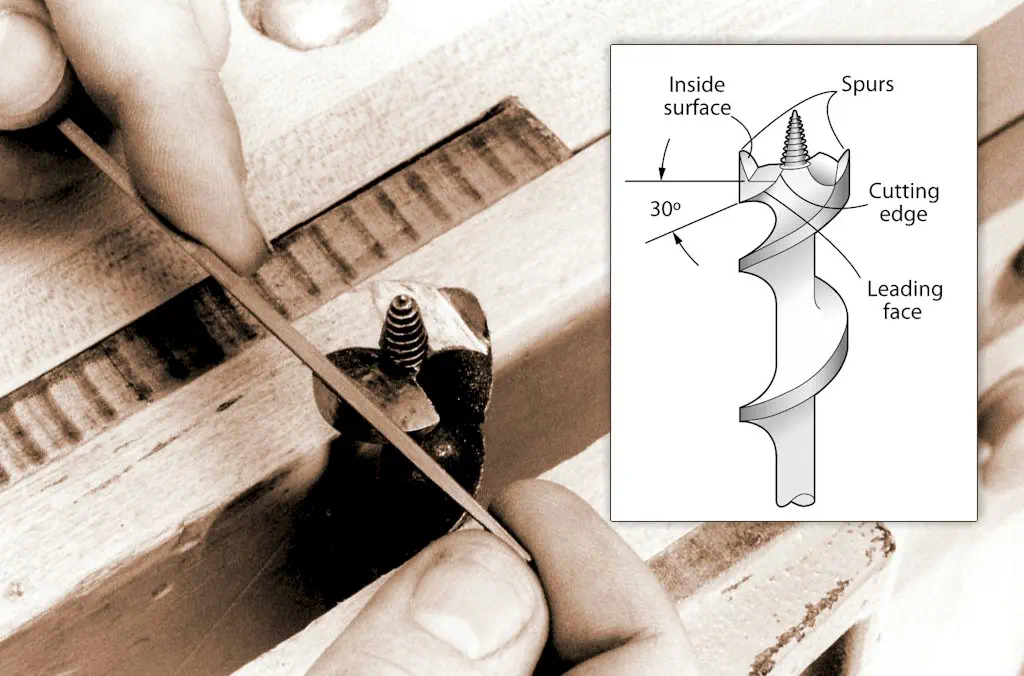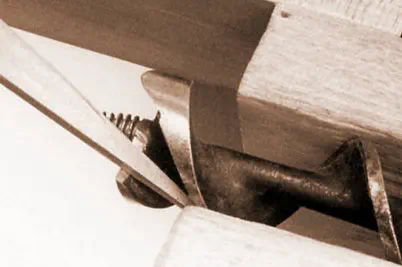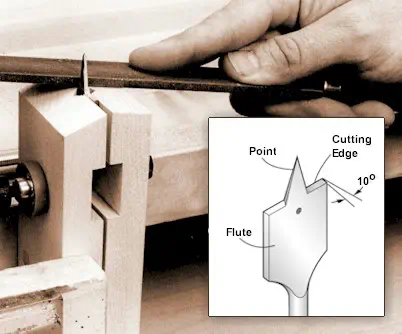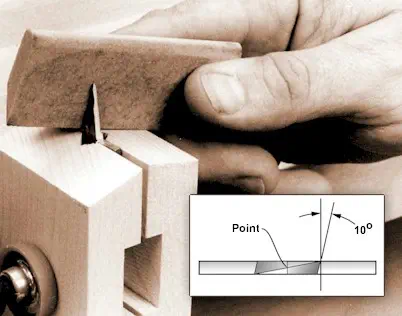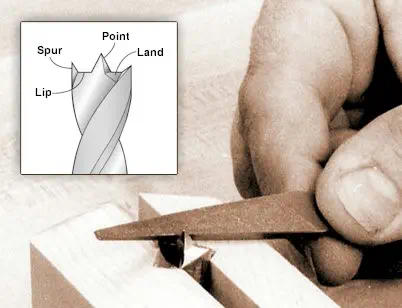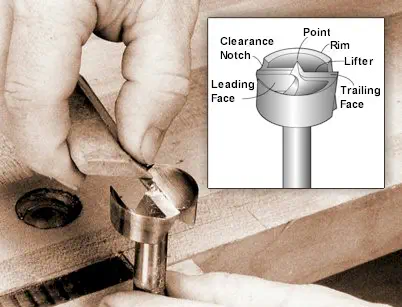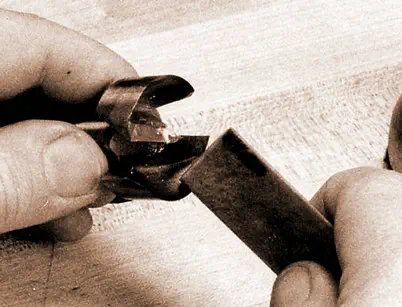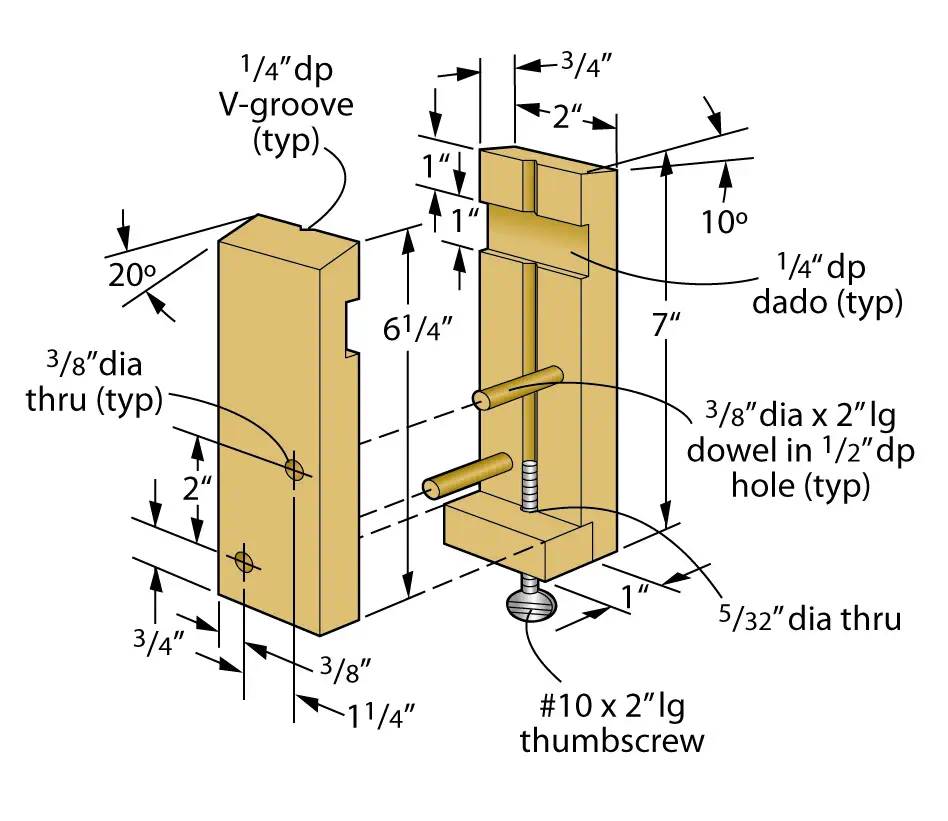SHARPENING AN AUGER BIT
1- Before beginning, take a good look at your auger file. Note that one end has safe edges while the other has safe faces. (A safe file surface has no teeth.) File the inside surfaces of the spurs using the file end with safe edges. After filing, make sure both spurs are the same length. Twist the screw lead into a scrap, holding the body square to the surface. Both spurs should bite into the wood at the same time. If they don’t, file the longer spur until it’s even with the other.


